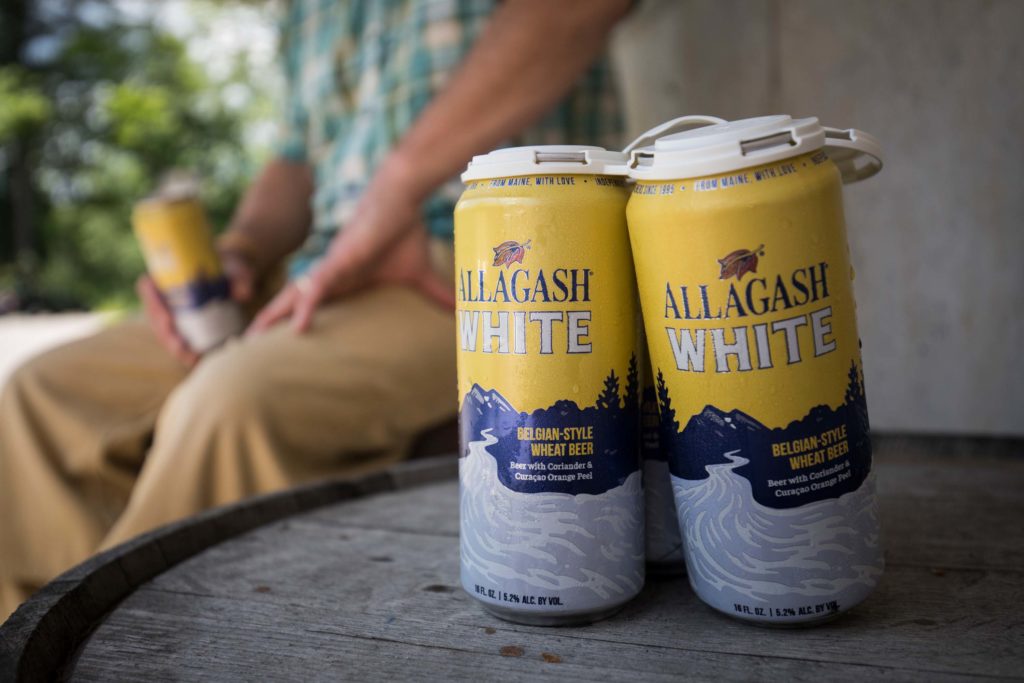New Look for a Classic
Allagash Brewing Company embraces cans, starting with the iconic White.

Even on an unseasonably chilly, damp June weekday, the parking lot at Allagash Brewing Company is packed with cars, and most seats in both the indoor and covered outdoor tasting areas are occupied. Founded in 1995, Allagash is the largest and most well-known of Maine’s 130-plus craft breweries, and fans flock year-round to this industrial park on the outskirts of Portland. I’m here to talk with founder Rob Tod, who won the 2019 James Beard Award for Outstanding Wine, Spirits, or Beer Producer, about his flagship beer, Allagash White, which the brewery started packaging in 16-ounce cans for the first time earlier this year. Tod leads me through the main brewing building, added in 2010, and into the original brewery, pointing out an expansion that will house a new canning line. Near the back of the building, shapes painted on the floor mark where the original brewing system, which Tod rigged and welded together himself, once stood. This is where he first brewed the deliberately different Allagash White.

A Belgian-style wheat beer, Allagash White was slow to catch on. In 1995 no one had seen a cloudy beer; most craft beers in the Northeast were clear, malty British-style brews. “The first thing bartenders or restaurant owners would say was, ‘What’s wrong with it? Why does it look like that?’” says Tod. “Then they’d taste it and say, ‘Why does it taste like that?’” Brewed with both malted and unmalted wheat—the latter gives the beer its hazy appearance—and spiced with coriander and Curaçao orange peel, Allagash White has a distinctive flavor yet easily pairs with a wide variety of foods. “It was a really hard sell for the first ten years,” says Tod. “All the growth has come in the past dozen years, when we’ve gone from just a few employees to 150.” The number and variety of Allagash brews has also grown, in part due to a program that encourages staff members to contribute ideas for new beers. “Last year alone I think we released 100 different beers [some just in small-batch kegs],” he says.
Allagash White remains the standard bearer. Beer in cans instead of bottles is more convenient for outdoor adventures, but there’s another reason Tod decided to can it. “People are drinking a lot of our beers in bars and restaurants, but not at home,” he says. “We feel there’s an opportunity to develop the brand in that space.” Once the new canning line is up and running, Allagash White will be released in both 12-ounce and 16-ounce cans in different package configurations, something that distributors and retailers have requested due to the increased popularity of canned beer. While he has plenty of other options, Tod remains loyal to Allagash White. “Allagash White never gets tired or old for me; it’s my favorite thing in the world to drink,” he says. “It’s so balanced and complex that, depending on what I’m eating or where I am or who I’m with, I still discover new aromas and flavors in the beer.”

